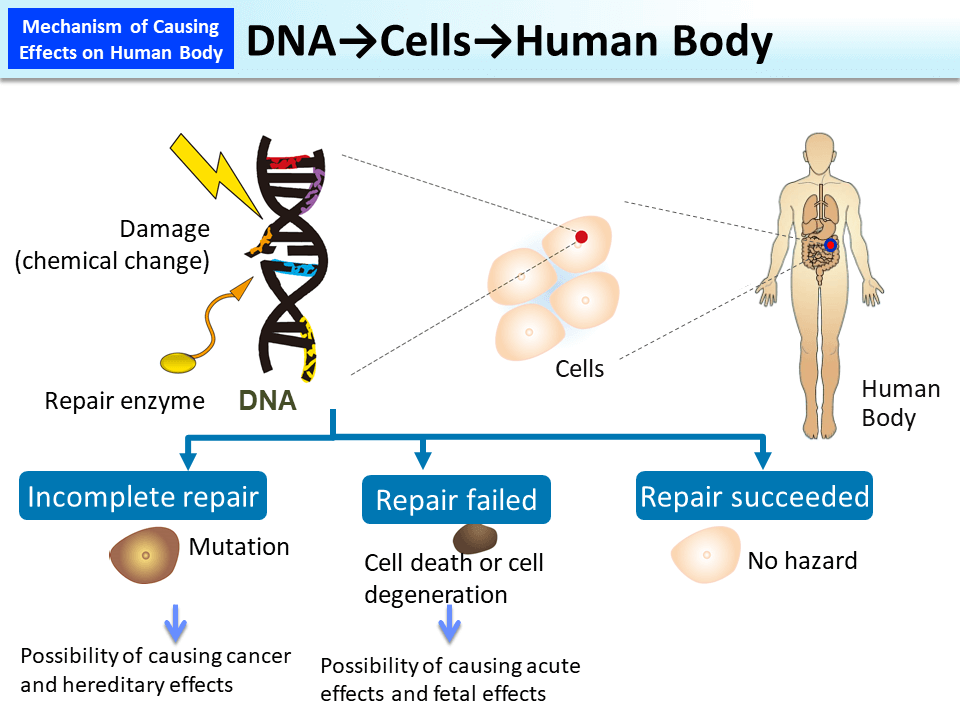DNA→Cells→Human Body
When radiation hits a cell, it may damage DNA (genes) inside the cell, but such damage is repaired by inherent human body systems.
Minor damage is successfully repaired and DNA is restored. However, when many parts are damaged, they cannot be fully repaired and cells themselves die. Even when some cells die, if other cells can replace them, dysfunction does not occur in organs and tissues. However, when a large number of cells die or degenerate, there is the possibility that deterministic effects will appear, such as hair loss, cataract, skin injury or other acute disorders, as well as fetal disorders (p.85 of Vol. 1, "Lapse of Time after Exposure and Effects," and p.86 of Vol. 1, "Deterministic Effects").
When a cell in which genes were not completely repaired survives, cell genes may mutate and cause stochastic effects such as cancer or hereditary disorders.
DNA is damaged not only by radiation but also by carcinogens in foods, tobacco, chemical substances in the environment and active oxygen, etc. It is said that DNA is damaged at 10,000 to 1,000,000 locations per cell every day. Damage due to low-dose exposures is significantly rare compared with metabolic DNA damage. However, radiation provides energy locally and causes complicated damage affecting multiple parts in DNA. Approx. 85% of radiation effects are caused by active oxygen, etc. created by radiation and approx. 15% is direct damage by radiation.
- Included in this reference material on March 31, 2013
- Updated on March 31, 2017

